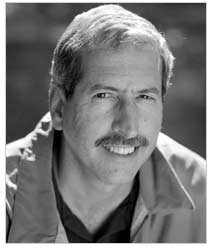Biblio
Anadarko is among the largest independent oil and natural gas exploration and production companies in the world, with approximately 2.3 billion barrels of oil equivalent (BBOE) of proved reserves at year-end 2009.
See: Cliford Kraus. (2008). New York Times. "There’s Gas in Those Hills".
Andarko, BP, and Transocean have each blamed the other for responsibility in the The Deepwater Horizon oil spill (also referred to as the BP oil spill, the Gulf of Mexico oil spill, the BP oil disaster or the Macondo blowout).
See: Deepwater Horizon Committee Hears From Oil Industry Executives
BP’s partners in the Macondo well–Anadarko Petroleum and Mitsui–have so far refused to pay any costs for the spill, claiming that BP’s gross negligence means it is 100% liable.
If investigations exonerate BP, those companies will be liable for billions of dollars. There are particular doubts over whether Anadarko could afford to pay its full share.
The company’s credit rating was cut to junk level in June.
![]()
"The American Petroleum Institute (API) is the only national trade association that represents all aspects of America’s oil and natural gas industry. Our nearly 400 corporate members, from the largest major oil company to the smallest of independents, come from all segments of the industry. They are producers, refiners, suppliers, pipeline operators and marine transporters, as well as service and supply companies that support all segments of the industry."
See API Ads:
Increased production of oil and natural gas can help rebuild America’s economy by creating new jobs and generating more than $1 trillion for federal, state and local budgets.
Let's check the facts. The costs of spill clean-up, global warming, and devastated marine ecosystems remain undocumented.
See also: Put America to Work. (2009). Scroll down and roll over the interactive U.S. map and click on any state to read the same copy with plug-in paragraphs state by state.
Landmen constitute the business side of the oil and gas and mineral exploration and production team. "The American Association of Professional Landmen is a voluntary international professional organization that unites approximately 12,000 landmen and land-related persons through professional development and service."
The membership of American Association of Petroleum Geologists (AAPG) includes geologists, geophysicists, CEOs, managers, consultants, students and academicians. The purpose of the organization is to foster scientific research, advance the science of geology, promote technology and inspire high professional conduct.
America's Natural Gas Alliance exists to promote the economic, environmental and national security benefits of greater use of clean, abundant, domestic natural gas.
We represent 34 of North America's largest independent natural gas exploration and production companies and the leading developers of the shale plays now transforming the clean energy landscape.
See ANGA's rebuttal of Josh Fox's Gasland.
From Sourcewatch:
Immediately upon the film's release, Energy In Depth issued a paper claiming to "debunk" the film's documentary evidence.
Energy in Depth (EID) is a pro-oil-and-gas drilling industry front group formed by the American Petroleum Institute, the Petroleum Association of America and dozens of additional industry organizations for the purpose of denouncing the FRAC Act proposed by Colorado U.S. Rep. Diana DeGette to regulate underground fracking fluids.
EID has crafted an entire campaign to delegitimize Fox's film, coining itself "Debunking Gasland." Many Facebook and Google users have even reported "Debunking Gasland" ads popping up on those respective websites.
Josh Fox has responded to every claim in "Debunking Gasland" put forth by Energy In Depth in a piece titled "Affirming Gasland."
History of regulating hydraulic fracturing under the Safe Drinking Water Act (SDWA)
From Affirming Gasland, "Supplemental Reading Section", p. 24.
The Safe Drinking Water Act requires EPA to promulgate regulations for states to administer these provisions of the law in order to protect underground sources of drinking water. However, although the SDWA gave the EPA the authority to regulate underground injection practices, Congress also directed that the EPA should not prescribe unnecessary regulation on oil- and gas- related injection.
Therefore, after the Safe Drinking Water Act passed, the EPA erroneously took the position that hydraulic fracturing did not fall within the regulatory definition of underground injection as provided in the Act.
In 1997 the 11th Circuit Court of Appeals laid the matter to rest when it conclusively ruled in LEAF v EPA, 118 F.3d 1467 (11th Cir. 1997) that hydraulic fracturing activities constituted “underground injection” under Part C of the SDWA.
As a result of the court’s ruling, in 1999 the state of Alabama amended its rules and made hydrofracking subject to the provisions of Part C of the SDWA by requiring Class II permits for each hydrofracking well.
Cheney’s Halliburton (a prime developer and leading practitioner of hydraulic fracturing) began lobbying Washington to exempt fracturing from regulation under the Safe Drinking Water Act.
Then in 2001, during his second week in office, George W. Bush created the Energy Task Force, with Vice President Dick Cheney as chairman. The mission of the task force aimed to “develop a national energy policy designed to help the private sector.” Its final report included a recommendation to exempt fracturing from regulation. Cheney removed the exemption from the draft only after being pressed by EPA chief Christie Whitman.
The exemption surfaced again in the Bush/Cheney Energy Bill of 2003 which did not pass, and reemerged one final time, in the Energy Policy Act of 2005, thanks, in part, to the efforts of Congressmen James Inhofe of Oklahoma and Joe Barton of Texas. To avoid the effect of the ruling in LEAF v EPA, Sec 322 of the Act specifically provides that the term “underground injection” excludes the underground injection of fluids pursuant to hydraulic fracturing operations related to oil, gas, or geothermal production activities. This clause from the law is actually photographed in Gasland at 31:42.
The 2005 Energy Policy Act also altered the Clean Water Act stormwater provisions. Pub.L. No. 109-58, § 323, 119 Stat. 694 (codified as amended at 33 U.S.C. § 1362(24). Section 323 modified the Clean Water Act's definition of an oil and gas exploration and production activity to include oil and gas construction activities. Because the Clean Water Act mandates that the EPA not require a stormwater permit for oil and gas exploration and production activities, it has been argued that the change in the Energy Policy Act of 2005 excluded oil and gas construction activities from stormwater permit coverage, without regard of the size of acreage disturbed.
Previous laws exempted oil and gas drilling, known as oil and gas exploration and production, from Superfund (CERCLA) and RCRA (hazardous waste). CERCLA includes substances that are elements of petroleum as hazardous in Section 101(14), yet crude oil and petroleum are specifically exempt from coverage under the last clause of the section. Thus, hazardous chemicals that would otherwise fall under the ambit of CERCLA are immune from the statute when encompassed in petroleum or crude oil. Likewise, the Solid Waste Disposal Act (SWDA) of 1980 exempted oil field wastes from Subtitle C of the RCRA.
Oil and gas drilling is not typically covered by Clean Air Act permitting since EPA’s CAA regulations do not allow EPA to aggregate or group a set of wells as a single source of air emissions. EPA has proposed rules that if promulgated would allow EPA and the states to aggregate air emissions coming from one company when the facilities are connected to one set of piping.
Some oil and gas machines emit large enough air emissions to be subject to air permit requirements, for example gas dehydradation units emitting over 10 tons per year of volatile organic compounds (VOCs) and gas compressions engines emitting over 50 tons of NOx per year.
However, the industry remains mostly unregulated under this statute by using many smaller compressors and dehydrators which individually emit less VOCs than the limits. If these units were to be aggregated and counted as one larger source (which they should be, in our view) the regulations would be in effect. In addition, neither the diesel engines used to drill nor the volatiles that come off the reserve pits are subject to CAA permit regulations.
For a more complete list of these exemptions please see the following websites:
Earthworks. (2007). "The Oil and Gas Industry’s Exclusions and Exemptions to Major Environmental Statutes."
NRDC. (2007). "Drilling Down: Protecting Western Communities from the Health and Environmental Effects of Oil and Gas Production."
NRDC. (2007). "Toxic Oil and Gas Production Gets a Free Pass to Pollute."
The Energy Policy Act negated the effect of the Alabama LEAF case by expressly defining HF as not subject to the SDWA, provided that HF fluids did not contain diesel; HF that contains diesel remains subject to SDWA limitations.
See: IADC. "Alabama lawsuit poses threat to hydraulic fracturing across U.S." Drilling Contractor. Jan/Feb. 2000.
See: Gasland vs Big Oil and Gas
See: Gasland - The Debate
See: Bushwhacked : Life in George W. Bush's America
See: U.S. Environmental Protection Agency (EPA): Hydraulic Fracturing Study (2010-2012)
Our analysis suggests that while shale gas development poses significant risks to the environment, including faulty well construction, blowouts, and above-ground contamination due to leaks and spills of fracturing fluids and waste water, technologies and best practices exist that can help manage these risks.
Best practices are currently being applied by some producers in some locations, but not by all producers in all locations. Enforcing strong regulations is necessary to ensure broader adoption of these practices and to minimize risk to the environment. In addition, if increased shale gas development is to be undertaken responsibly, the cumulative risks of developing thousands of wells must be considered.
The report concludes that faulty well construction, in particular poorly cemented steel casings needed to isolate the gas from shallow formations, as well as above-ground contamination due to leaks and spills of fracturing fluids and waste water, pose more significant risks to the environment.
In addition, continued study and improved communication of the environmental risks associated with both individual wells and large scale shale gas development are essential for society to make well-informed decisions about its energy future.
"Although the technologies, best practices, and regulations that can help minimize these risks exist, they have not yet been universally adopted," says Worldwatch Fellow and co-author Saya Kitasei. "Experiences in Colorado, Wyoming, Pennsylvania, and New York demonstrate that strong public pressure exists for stricter oversight."
Mark Zoback is one of the scientists on the short list for the upcoming EPA study.
The Worldwatch Institute is an independent research organization recognized by opinion leaders around the world for its accessible, fact-based analysis of critical global issues. The Institute's three main program areas include Climate & Energy, Food & Agriculture, and the Green Economy.
See: Flavin, C., and S. Kitasei. The Role of Natural Gas in a Low-Carbon Energy Economy. Briefing paper. Natural Gas and Sustainable Energy Initiative. Washington, D.C.: Worldwatch Institute, 2010. (PDF, 617kb)
Lie to me.
I've heard everything from "my secret fracking fluid is safe", to "I need sweetheart regulation and tax deals for my Big Oil and Gas folks because we are still having trouble making ends meet in our family." Can you convince a room of kids that fracking is safe using cupcakes and icing? Encana can. How about having kids compare natural gas to farting in Spectra Energy's "Kids Say [the] Darndest Things About Natural Gas"?
And there really is a Foreign Corrupt Practices Act (FPCA) blog, but the Yes Men have us wondering about the truth in ways that make us smarter by asking us to verify the legitimacy of the messages we receive through the media. Their work makes urgent civil disobedience by activists such as Appalachia Rising and scientists like James Hansen look all the more vibrant.
Unlike Josh Fox and Michael Moore whose "in your face" documentaries rub the liars' nose in doodoo, Andy Bichlbaum and Mike Bonanno serve up matter-of-fact impersonations that put their personalities in the back seat. Their tagline: "Sometimes it takes a lie to expose the truth."
Where is the truth about the Marcellus Shale gas play? It's here and out there, far flung from British Columbia, Wyoming, Colorado through Texas, Louisiana, Alabama to Pennsylvania, New York and on to Poland, Paris, Malaysia, China, India, and Nigeria; from corporate corruption to lax government oversight and environmental justice. It's hiding in the boardrooms waiting for the whistle blowers and insiders to say that we really needed those environmental impact statements to be honest after all, after there is not a drop of water left to drink. (Neil Zusman, Jan. 30, 2011.)
Fake Newspaper/Database, real website as reported by YesMen, Andy Bichlbaum and Mike Bonanno.
See: Video - The Yes Men Fix the World. (2009). Full 1:35 video from YouTube below.
See: Yes Men Claim Leonore Annenberg Prize For Art Award
June 18, 2009
FOR IMMEDIATE RELEASE
TOP HEADLINE: WORLD LEADERS SIGN PACT TO AVERT CLIMATE DISASTER
Newspaper Ignites Hope, Announces "Civil Disobedience Database"
In a front-page ad in today's International Herald Tribune, the leaders of the European Union thank the European public for having engaged in months of civil disobedience leading up to the Copenhagen climate conference that will be held this December. "It was only thanks to your massive pressure over the past six months that we could so dramatically shift our climate-change policies.... To those who were arrested, we thank you."
There was only one catch: the paper was fake.
Looking exactly like the real thing, but dated December 19th, 2009, a million copies of the fake paper were distributed worldwide by thousands of volunteers in order to show what could be achieved at the Copenhagen climate conference that is scheduled for Dec. 7-18, 2009. (At the moment, the conference is aiming for much more modest cuts, dismissed by leading climate scientists as too little, too late to stave off runaway processes that will lead to millions or even billions of casualties.)
The paper describes in detail a powerful (and entirely possible) new treaty to bring carbon levels down below 350 parts per million - the level climate scientists say we need to achieve to avoid climate catastrophe. One article describes how a website, http://BeyondTalk.net, mobilized thousands of people to put their bodies on the line to confront climate change policies - ever since way back in June, 2009.
Although the newspaper is a fake (its production and launch were coordinated by Greenpeace), the website is real. Beyondtalk.net is part of a growing network of websites calling for direct action on climate change, building on statements made in recent months by noted political figures. (For example, in September Nobel laureate Al Gore asserted that "we have reached the stage where it is time for civil disobedience to prevent the construction of new coal plants.")
See: Stephen Holden. "All Suited Up for Mischief, to Rumple Stuffed Shirts." NYT. Oct. 7, 2009.
See: The Yes Men. "Chevron - We Agree."
See: Chevron Human Energy Stories | Addressing Climate Change.
See: Anne C. Mulkern. "U.S. Chamber Sues Activists Over Climate Stunt." NYT. Oct. 27, 2009.
Workers at a steel mill and a power plant were the first to notice something strange about the Monongahela River last summer. The water that U.S. Steel and Allegheny Energy used to power their plants contained so much salty sediment that it was corroding their machinery. Nearby residents saw something odd, too. Dishwashers were malfunctioning, and plates were coming out with spots that couldn’t easily be rinsed off.
See: Nicholas Kusnetz. "Pennsylvania’s Drilling Wastewater Released to Streams, Some Unaccounted For." ProPublica. Jan. 5, 2011.
See: West Virginia Blue: Dunkard Creek fish kill
See: The Tragedy of the Commons
See: Do the natural gas industry’s surface water withdrawals pose a health risk?
See: Center for Healthy Environments & Communities Homepage
See: The Case for a Truth and Reconciliation Commission on Toxic Hazards
See: Drilling Wastewater Disposal Options in N.Y. Report Have Problems of Their Own - ProPublica
See: Lenape Resources, Inc. | Underground Injection of Wastewater
See: Rulings Restrict Clean Water Act, Foiling E.P.A.
See: Activists Block Entrance to DEP Headquarters, Condemn Failed Enforcement
See: Flow - The War Between Public Health and Private Interests
"Rep. Diane DeGette’s (D-CO) attempt to regulate fracking — underground hydraulic fracturing for natural gas extraction — is under attack by a multimillion-dollar lobbying and public-relations campaign from the oil and gas industry. Led by the American Petroleum Institute and the Independent Petroleum Association of America, dozens of industry organizations established the Energy in Depth front group to denounce fracking legislation as an “unnecessary financial burden on a single small-business industry, American oil and natural gas producers.”
See: Lee Fuller. "HF 101: As Cornell Begins Study of Shale Gas Exploration, Energy In Depth Offers Itself Up as Resource for Ad Hoc Panel". Energy in Depth.
It's really hard for me to read about the Dunkard Creek fish kill without getting very angry.
An ecosystem has been destroyed.
...the 38-mile creek is all but dead, its 161 species of fish, mussels, salamanders, crayfish and aquatic insects killed by mysterious pollutants coming from sources state and federal agencies have yet to pinpoint despite aggressive field work.
The investigation thus far indicates the most likely cause as oil and gas drilling wastewater. (There's more ability to generate wastewater from the Marcellus Shale drilling than there are wastewater treatment facilities in the area, so the incentive for rogue wastewater disposal is high.)
West Virginia Community Blog. The Best Blogging Community in West Virginia. Democratic politics, progressive policies, the good life and free living in Wild, Wonderful West Virginia.
A federal judge has overturned water quality rules that were meant to protect southeastern Montana cropland from natural gas drilling but were assailed by Wyoming as a threat to energy production.
The rules covered the Tongue and Powder rivers, which flow north from the rich gas fields of northeastern Wyoming into primarily agricultural land in Montana.
Drafted by Montana and approved by the Environmental Protection Agency, the rules limited how much salty water - a byproduct of drilling - could enter the rivers. State officials said the EPA had not yet begun to enforce the rules, in part because of a pending lawsuit.
In a judgment in that case issued Tuesday, U.S. District Judge Clarence Brimmer in Cheyenne, Wyo., annulled the rules and sent them back to the EPA to reconsider. Brimmer wrote that the EPA had failed to give the water quality standards a full review when it approved them in 2003 and 2008.
The lawsuit has pitted natural gas companies backed by the state of Wyoming against the EPA and Montana.
The case represents one of several running skirmishes between Montana and Wyoming over the rivers that flow north across their shared border.
The quality of drinking water is an urgent concern for over forty million people who live in proximity to the Marcellus Shale.
"The 35-year-old federal law regulating tap water is so out of date that the water Americans drink can pose what scientists say are serious health risks — and still be legal.
Only 91 contaminants are regulated by the Safe Drinking Water Act, yet more than 60,000 chemicals are used within the United States, according to Environmental Protection Agency estimates. Government and independent scientists have scrutinized thousands of those chemicals in recent decades, and identified hundreds associated with a risk of cancer and other diseases at small concentrations in drinking water, according to an analysis of government records by The New York Times.
But not one chemical has been added to the list of those regulated by the Safe Drinking Water Act since 2000.
Other recent studies have found that even some chemicals regulated by that law pose risks at much smaller concentrations than previously known. However, many of the act’s standards for those chemicals have not been updated since the 1980s, and some remain essentially unchanged since the law was passed in 1974."
More than three decades after the Clean Water Act, iconic American waterways like the Chesapeake Bay and Puget Sound are in perilous condition and facing new sources of contamination.
With polluted runoff still flowing in from industry, agriculture and massive suburban development, scientists note that many new pollutants and toxins from modern everyday life are already being found in the drinking water of millions of people across the country and pose a threat to fish, wildlife and, potentially, human health.
In Poisoned Waters, Pulitzer Prize-winning journalist Hedrick Smith examines the growing hazards to human health and the ecosystem...
...In addition to assessing the scope of America's polluted-water problem, Poisoned Waters highlights several cases in which grassroots citizens' groups succeeded in effecting environmental change: In South Park, Wash., incensed residents pushed for better cleanup of PCB contamination that remained from an old asphalt plant. In Loudon County, Va., residents prevented a large-scale housing development that would have overwhelmed already-strained stormwater systems believed to contribute to the contamination in Chesapeake Bay.
See Credits.
























